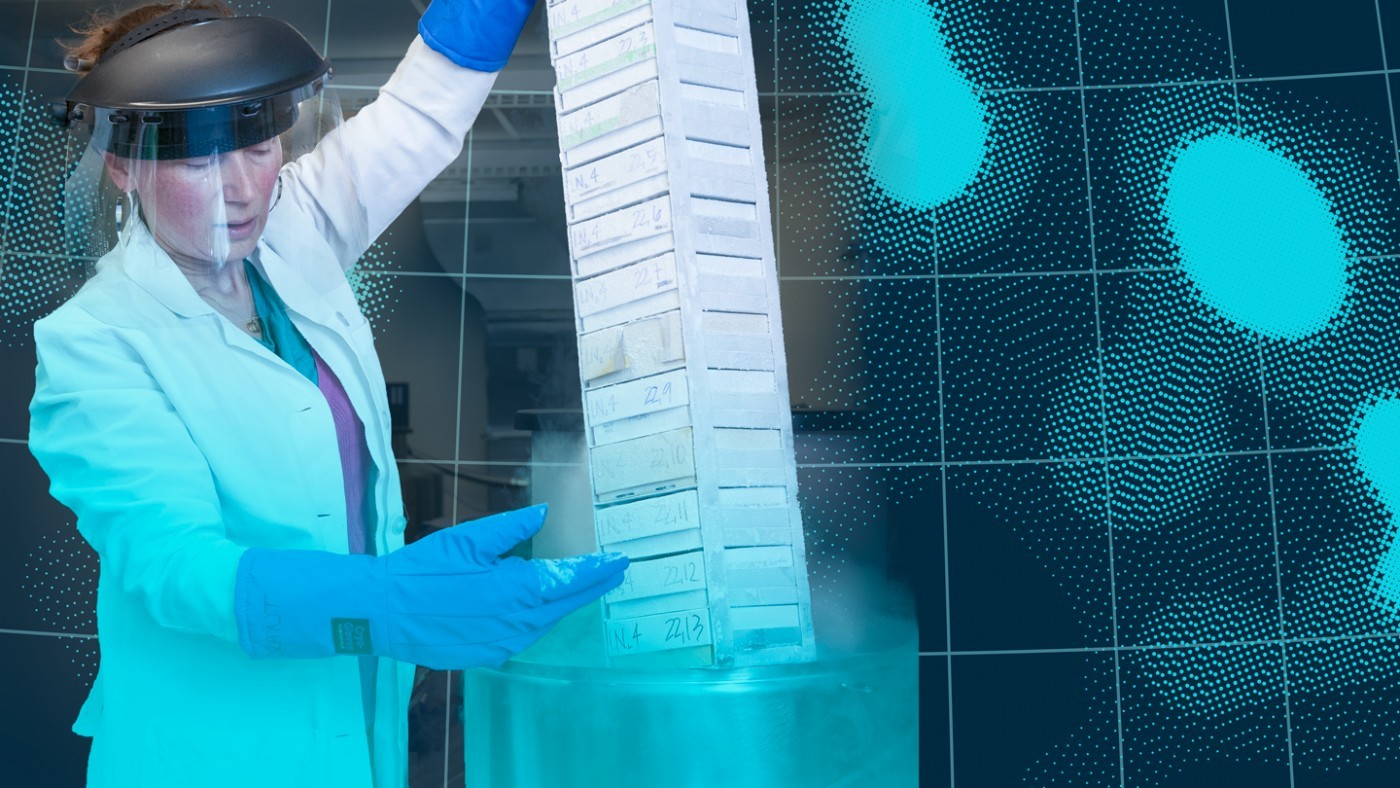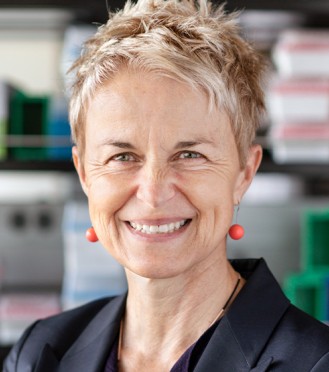Gladstone NOW: The Campaign Join Us on the Journey✕

Gladstone scientists mobilize to confront SARS-CoV-2
In response to the COVID-19 pandemic, Gladstone scientists have rapidly pivoted the focus of their research labs to the novel virus, SARS-CoV-2. Specifically, they are leveraging their established tools, unique infrastructure, and diverse expertise in virology to develop improved diagnostics, identify targeted treatment strategies, and invent preventative approaches. Gladstone scientists were instrumental in converting HIV/AIDS from a uniformly lethal disease into a chronic condition, and are now bringing the same urgency and focus to combatting COVID-19 in a comprehensive manner. A few examples are detailed below.
- DIAGNOSTICS—Jennifer Doudna, PhD, co-inventor of CRISPR technology, and virologist Melanie Ott, MD, PhD, are collaborating to develop a CRISPR-based method to rapidly measure COVID-19 RNA. By combining the technique with iPhone technology, they aim to develop a diagnostic that could deliver rapid results and be widely deployed even far from traditional labs, such as in airports and other ports of entry, and in remote communities throughout the world.
- TREATMENT—Nevan Krogan, PhD, has discovered all of the human host cell proteins that the virus interacts with to hijack the cell’s machinery. These proteins serve as novel targets for drug therapies. Since the high fatality rate is driven by respiratory and cardiac failure, Melanie Ott, Bruce Conklin, MD, and Todd McDevitt, PhD, will test effects of the virus and drug candidates in human lung “organoids” and human heart cells, both developed from human stem cells. Virologist Warner Greene, MD, PhD, is reconfiguring an HIV entry/fusion assay to study entry of the virus into host cells mediated by the Spike protein of SARS-CoV-2. His team will screen a library of FDA-approved drugs to identify those that could be rapidly repurposed as a treatment for COVID-19 patients or even as a preventive for high risk-groups. The assay could also be used to select the best plasma samples donated by people who have recovered from COVID-19 for infusion into seriously ill patients.
- PREVENTION—Leor Weinberger, PhD, has pioneered an innovative approach to fighting the spread of viral pathogens called therapeutic interfering particles (TIPs), which could be an alternative to a vaccine. TIPs are defective viral particles that mimic the virus but are ineffective in replicating. They turn the tables on the virus by hijacking its machinery to transform virus-infected cells into factories that produce even more therapeutic particles, amplifying the effect of TIPs in stopping the spread of virus. TIPs targeting COVID-19 would transmit along the same paths as the virus itself, and thus provide protection to even the most vulnerable populations.
This work is made possible in part because Gladstone has biosafety level 3 (BSL-3) facilities on-site, which are now dedicated to work on COVID-19. The BSL-3 research will be overseen by Melanie Ott, in partnership with UC San Francisco and its Institutional Biosafety Committee and Director of High Containment Laboratories.
In the coming weeks Gladstone will open a Biosafety Level 3 (BSL-3) lab which will allow researchers to carry out research with live viruses while keeping themselves, the building, and the environment safe from contamination. Melanie Ott, MD, PhD, and BSL-3 Lab Director Mauricio Montano answer some of the questions around this decision and its potential impact.
About Gladstone Institutes
To ensure our work does the greatest good, Gladstone Institutes focuses on conditions with profound medical, economic, and social impact—unsolved diseases. Gladstone is an independent, nonprofit life science research organization that uses visionary science and technology to overcome disease. It has an academic affiliation with UC San Francisco.
For Media
Julie Langelier
Associate Director, Communications
415.734.5000
Email
About Gladstone Institutes
Gladstone Institutes is an independent, nonprofit life science research organization that uses visionary science and technology to overcome disease. Established in 1979, it is located in the epicenter of biomedical and technological innovation, in the Mission Bay neighborhood of San Francisco. Gladstone has created a research model that disrupts how science is done, funds big ideas, and attracts the brightest minds.
Support Discovery Science
Your gift to Gladstone will allow our researchers to pursue high-quality science, focus on disease, and train the next generation of scientific thought leaders.
Science in Seconds | Researchers Pinpoint Key Gene Behind Heart Defects in Down Syndrome
Science in Seconds | Researchers Pinpoint Key Gene Behind Heart Defects in Down Syndrome
In this video, Gladstone scientists share how they used stem cells, gene editing, and AI to identify a gene driving heart defects in Down syndrome—and how reducing its levels in mice restored normal heart development, offering hope for future treatments
Gladstone Experts Cardiovascular Disease Data Science and Biotechnology Pollard Lab Srivastava Lab AI Big Data CRISPR/Gene Editing Human Genetics Stem Cells/iPSCsScience in Seconds | The Thinking Microscope: Research Powered by an AI Brain
Science in Seconds | The Thinking Microscope: Research Powered by an AI Brain
In this video, Steve Finkbeiner and Jeremy Linsley showcase Gladstone’s groundbreaking “thinking microscope”—an AI-powered system that can design, conduct, and analyze experiments autonomously to uncover new insights into diseases like Alzheimer’s, Parkinson’s, and ALS.
Gladstone Experts ALS Alzheimer’s Disease Parkinson’s Disease Neurological Disease Finkbeiner Lab AI Big DataVisualizing Stem Cell Technology: An Animated Explainer
Visualizing Stem Cell Technology: An Animated Explainer
In this animated short, Deepak Srivastava explains how scientists can reprogram ordinary skin or blood cells back in time—turning them into induced pluripotent stem cells which are capable of becoming any cell type in the body.
Gladstone Experts Stem Cells/iPSCs




